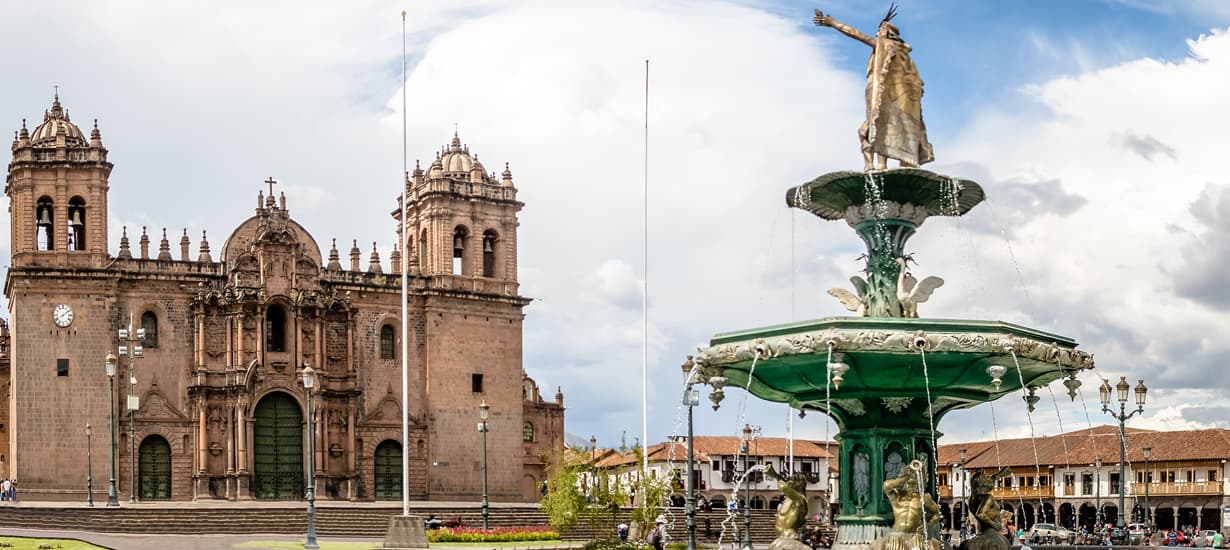Cusco, Lima and Arequipa: Peru's Three Historical Centers Recognized as World Heritage Sites
Síguenos en:Google News
Peru, with its abundant cultural and architectural legacy, boasts three historic centers acknowledged by UNESCO as World Heritage Sites. These iconic locales not only serve as tangible testaments to the nation's history but also stand as priceless treasures enriching global culture.
Here, we tell you about these historic spaces and why they have earned such an important distinction.
1. Historic Centre of Lima:
Lima, the capital of Peru, boasts one of the most remarkable historical centers in Latin America. Serving as the epicenter of Spanish colonial influence in the region, its historic center preserves numerous colonial-style buildings. Among them stand the Cathedral of Lima, the Archbishop's Palace, and the Church of San Francisco, each housing invaluable artworks and historical treasures. Recognized for its cultural significance, the Main Square of Lima was honored with the Cultural Heritage seal of Peru in 1972, while UNESCO bestowed upon it the prestigious status of World Heritage Site in 1991.
Prior to Francisco Pizarro laying the groundwork for the Main Square of Lima in 1535, the area was under the jurisdiction of the Inka curaca Taulichusco, who oversaw the valley and its socioeconomic structure from there. Nowadays, right near the Square, along Santa Rosa passage, there stands a rock or Andean huanca, paying tribute to the so-called "last curaca of Lima". This serves as a fascinating starting point for exploring the historic center and learning about the pre-Hispanic heritage of the city and the modern world.
The Main Square boasts a blend of architectural styles spanning various eras, with a notable prevalence of neocolonial design. Among its historical features, the fountain stands as one of the oldest, dating back to 1651. It is embellished with lions and mythical creatures, crowned by the Angel of Fame.
 Photography: Shutterstock
Photography: Shutterstock
2. Historic Center of Cusco:
Located in the heart of the Peruvian Andes, this city stood as the urban center of the Inka civilization, boasting a sophisticated array of religious and administrative purposes. Cusco was the most important city of the Inka Empire and served as a religious, political, and cultural center. When the Spanish conquistadors set foot in Cusco during the 16th century, they preserved its structure while erecting churches and palaces atop the sacred grounds of the Inca's temples and monuments.
Its historic center is full of impressive Inca and colonial buildings, such as the Temple of the Sun (Qorikancha) and the Church of Santo Domingo, which was built over the Inka palace of Wiracocha.
UNESCO granted World Heritage Site status to the Historic Center of Cusco in 1983, recognizing its profound cultural significance and role as a testament to both the Inka civilization and the Spanish conquest of America.
One of the most outstanding curiosities of Cusco is its Inka architectural engineering, which defies logic and modern understanding, such as the famous Stone of the 12 Angles, which is located in the historic center, in the walls of a narrow street. This stone is famous for having such a precise shape that it fits perfectly with the others, an amazing example of the skill and precision of the ancient Inka builders.

Photography: Shutterstock
3. Historic Center of Arequipa:
Arequipa, known as the "White City" because of its buildings made of ashlars, a white volcanic rock, is another jewel of Peruvian heritage. Its historic center has magnificent baroque churches, such as the Cathedral Basilica of Arequipa and the Church of the Company, as well as elegant colonial mansions.
In 2000, UNESCO granted World Heritage Site status to the Historic Center of Arequipa, acknowledging its exceptional colonial architecture seamlessly blending with the surrounding natural landscape. Arequipa stands as a testament to how colonial architectural styles ingeniously accommodated the seismic challenges of the region.
The Santa Catalina Convent is an example of a structure that has endured through centuries and earthquakes. This colonial fortress, crafted with vibrant ashlars, narrates the tales of cloistered nuns who resided within its walls during the sixteenth century.
Furthermore, the Founder's Mansion is an exquisite colonial residence built in the 16th century by the city's founder, Manuel García de Carbajal. Transformed into a museum, it grants visitors a unique insight into the opulent lifestyle of colonial aristocracy, showcasing its luxurious furniture and original decorations.
Another intriguing feature lies in the Tuturutu's presence within the Main Square fountain—a metallic sculpture depicting a figure blowing a trumpet, seemingly embodying a vigilant and protective stance.
 Photography: Shutterstock
Photography: Shutterstock








